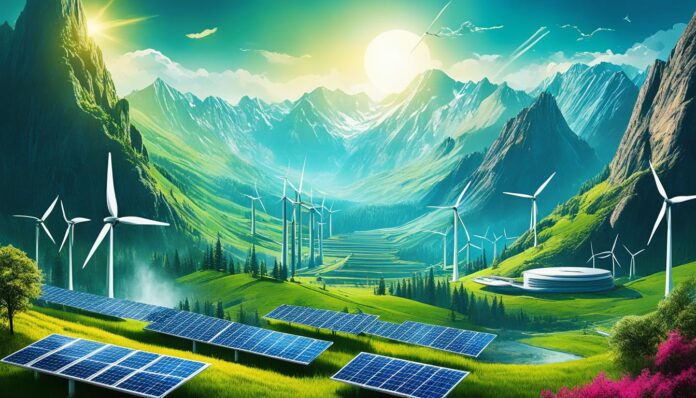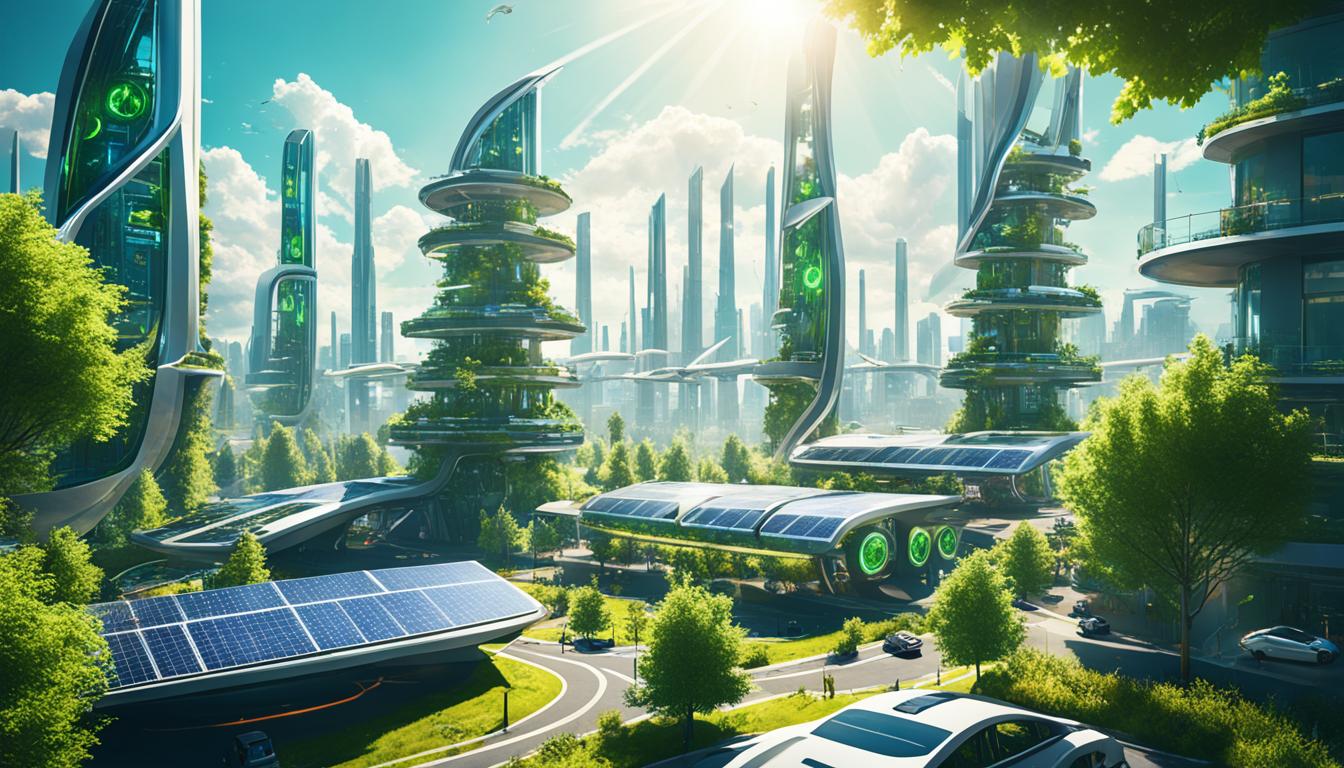
As we look ahead to the year 2025, the sustainability landscape is poised to undergo a remarkable transformation. According to leading industry experts, the top emerging trends in sustainability will include accelerating climate action, expanding renewable energy sources, and fostering innovative circular economy models. These advancements are driven by growing consumer awareness, evolving regulatory frameworks, and a heightened sense of urgency to address pressing environmental challenges.
One of the most significant trends is the accelerating climate action and clean energy transition. Companies and governments are recognizing the dire need to reduce greenhouse gas emissions and mitigate the impact of climate change. This is evident in the growing adoption of renewable energy sources, such as solar and wind power, as well as the development of eco-friendly transportation solutions and carbon capture technologies.
Alongside the clean energy transition, there is a rising tide of increased investment in sustainability reporting and compliance. Stringent regulations, such as the EU’s Corporate Sustainability Reporting Directive and California’s climate-related disclosure bills, are pushing companies to prioritize sustainable agriculture, green building materials, and water conservation strategies. This heightened focus on transparency and accountability will shape the way businesses operate and communicate their sustainability efforts.
Furthermore, the emergence of partnerships and collaborations for sustainable solutions is another key trend. Companies, governments, and stakeholders are recognizing the importance of working together to tackle complex sustainability challenges at scale. These collaborative efforts will span biodiversity protection initiatives and the development of innovative circular economy models that prioritize resource efficiency and waste reduction.
Key Takeaways
- Accelerating climate action and clean energy transition, including the adoption of renewable energy sources and eco-friendly transportation solutions.
- Increased investment in sustainability reporting and compliance, driven by regulatory changes and a focus on transparent, accountable practices.
- Continued expansion of partnerships and collaborations to develop sustainable solutions that address complex environmental challenges.
- Growing emphasis on sustainable product innovation and circular economy models that prioritize resource efficiency and waste reduction.
- Emergence of new technologies, such as carbon capture and advanced water conservation strategies, to support sustainability efforts.
Accelerating Climate Action and Clean Energy Transition
The emerging sustainability landscape for 2025 is marked by a renewed urgency to tackle climate change. As the “First source:” notes, climate change impacts will continue to worsen, leading to more extreme weather events, natural disasters, and degradation of ecosystems. Companies must develop better skills in managing volatility and building resilience to these challenges. Notably, there is a rising awareness and pressure, especially from younger generations, for corporate and government action on climate change. The “Second source:” highlights Colgate-Palmolive’s commitment to accelerating action on climate change, including a goal to achieve net zero carbon emissions across their value chain by 2040.
Continued Expansion of Renewable Energy and Clean Technologies
The “First source:” notes that the expansion of renewable energy and clean technologies is being driven by both aggressive policy and favorable economics, as renewables become cheaper than fossil fuels in most places. In 2023, the world added a record 440 gigawatts of renewable capacity, with China alone adding more solar than the existing solar capacity in the U.S. The “Third source:” discusses Covestro’s efforts to align their R&D project portfolio with the UN Sustainable Development Goals, including a target to spend 80% of R&D costs on projects that contribute to achieving these goals, further driving the adoption of renewable energy and clean technologies.
Transition Away from Fossil Fuels and Decarbonization Efforts
The “First source:” states that even the annual global climate meeting held in the oil-rich United Arab Emirates agreed to a “transition away” from fossil fuels, signaling the inevitability of the clean energy transition. The “Second source:” highlights Colgate-Palmolive’s goal to achieve net zero carbon emissions across their value chain by 2040 and 100% renewable electricity for their global operations by 2030 as part of their efforts to accelerate action on climate change and decarbonize their business.

What are the emerging trends in sustainability for 2025?
As companies and governments strive to build a more sustainable future, several key trends are emerging that will shape the sustainability landscape in 2025. From increased investment in reporting and compliance to innovative partnerships and circular economy models, these developments are poised to drive significant progress in areas like sustainable agriculture, green building materials, water conservation strategies, and biodiversity protection initiatives.
Increased Investment in Sustainability Reporting and Compliance
The “First source:” predicts that sustainability reporting and compliance will garner more attention and investment within companies in 2025. New regulations like the EU’s Corporate Sustainability Reporting Directive and California’s climate-related disclosure bills are driving this trend. A Danish industry association estimates that companies will have to spend as much on non-financial reporting as they do on financial reporting. The “Second source:” mentions Colgate-Palmolive’s commitment to 100% ingredient transparency and providing consumers with information and education to promote more sustainable habits.
Partnerships and Collaborations for Sustainable Solutions
The “First source:” notes that partnerships and collaborations to tackle sustainability issues at scale will grow in 2025, as companies, governments, and other stakeholders work together to find solutions. This includes collaborations in carbon-intensive industries like cement, steel, and aluminum, as well as customers committing to buying greener versions of these products. The “Third source:” discusses Covestro’s approach of working in partnership with others through various initiatives and consortia to contribute to the UN Sustainable Development Goals.
Sustainable Product Innovation and Circular Economy Models
The “Second source:” highlights Colgate-Palmolive’s focus on designing sustainable products to help consumers live more sustainable lives, including a target to make all of their packaging recyclable, reusable, or compostable by 2025. The “Third source:” also mentions Covestro’s efforts to increase carbon productivity and use carbon in an intelligent way, working with partners as part of the “Carbon Productivity Consortium” to develop methods for evaluating carbon productivity.
Conclusion
The emerging sustainability trends for 2025 identified in this article paint a promising picture for a greener future. From accelerating climate action and clean energy transition to increased investment in sustainability reporting and compliance, the business landscape is poised for transformative change. The continued expansion of renewable energy and clean technologies, coupled with partnerships and collaborations for sustainable solutions, will be crucial in driving this evolution.
Sustainable product innovation and circular economy models will empower consumers to make more eco-friendly choices, while initiatives like water conservation strategies and biodiversity protection will safeguard the natural world. Companies that remain agile and prepared to adapt to these rapidly evolving trends will be well-positioned to build a more sustainable future.
As the “First source” aptly concludes, “the best way to predict the future is to invent it.” By taking action and working together, we can shape a greener, more resilient world by 2025 and beyond, addressing the critical challenges of climate change, resource depletion, and environmental degradation. The time to embrace these emerging sustainability trends is now, as we collectively strive for a more sustainable and prosperous future.
FAQ
What are the emerging trends in sustainability for 2025?
According to the sources, the top emerging sustainability trends for 2025 include accelerating climate action and clean energy transition, increased investment in sustainability reporting and compliance, continued expansion of renewable energy and clean technologies, partnerships and collaborations for sustainable solutions, and sustainable product innovation and circular economy models.
What are the key drivers behind the accelerating climate action and clean energy transition?
The sources indicate that climate change impacts are worsening, leading to more extreme weather events and ecosystem degradation. There is also rising awareness and pressure, especially from younger generations, for corporate and government action on climate change. The clean energy transition is being driven by both aggressive policy and favorable economics, as renewables become cheaper than fossil fuels in most places.
How are companies investing in sustainability reporting and compliance?
The sources suggest that sustainability reporting and compliance will garner more attention and investment within companies in 2025. New regulations like the EU’s Corporate Sustainability Reporting Directive and California’s climate-related disclosure bills are driving this trend. Companies are expected to spend as much on non-financial reporting as they do on financial reporting.
What role are partnerships and collaborations playing in sustainable solutions?
The sources indicate that partnerships and collaborations to tackle sustainability issues at scale will grow in 2025, as companies, governments, and other stakeholders work together to find solutions. This includes collaborations in carbon-intensive industries as well as customers committing to buying greener versions of products.
How are companies innovating towards sustainable products and circular economy models?
The sources highlight that companies are focusing on designing sustainable products to help consumers live more sustainable lives, including targets to make all packaging recyclable, reusable, or compostable. Companies are also working to increase carbon productivity and use carbon in an intelligent way, partnering with others to develop methods for evaluating carbon productivity.
